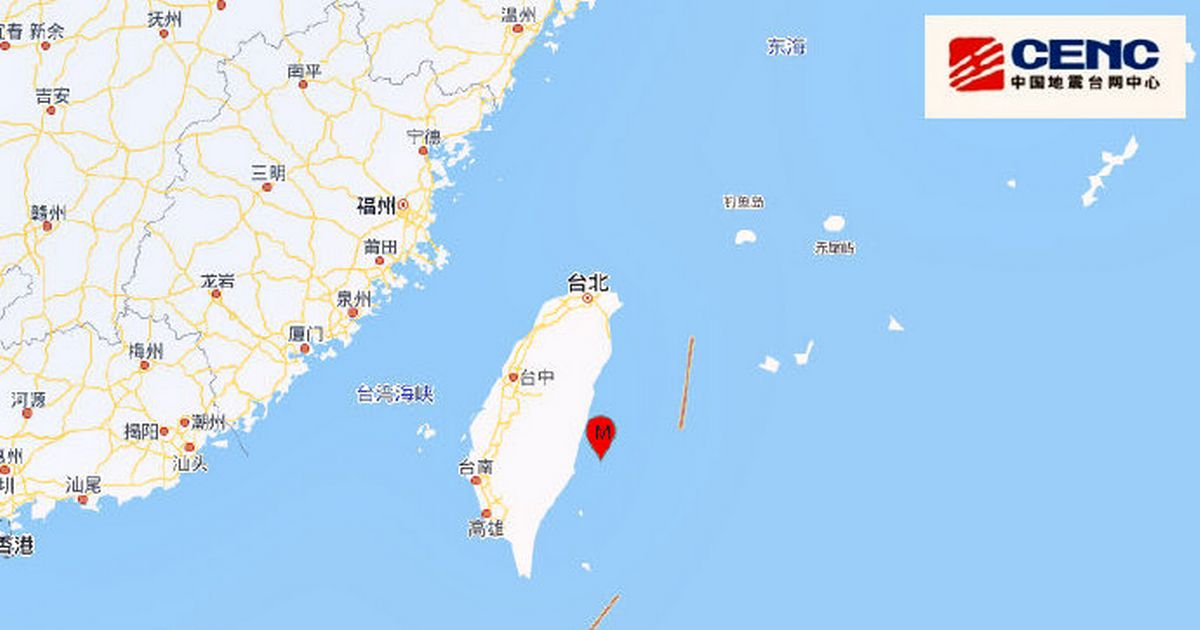A significant 6.4 magnitude earthquake struck Taiwan on Wednesday, June 11, 2025, at approximately 7 p.m. local time (12 noon UK time). The tremor, which was felt across the island, has raised concerns among residents, particularly regarding the potential for a tsunami. This event underscores Taiwan’s vulnerability to seismic activity, given its location along the Pacific “Ring of Fire.” The China Earthquake Networks Centre reported the quake originated at a depth of 30 kilometers (18.5 miles). While initial reports indicate no immediate damage, authorities are closely monitoring the situation.
Taiwan’s geographical position makes it prone to frequent earthquakes. This recent event serves as a crucial reminder of the importance of preparedness and resilient infrastructure. This article provides an in-depth look at the earthquake, including its impact, the responses from local authorities, and historical context. Stay with FYM News for continuous updates as the situation unfolds.
This article covers:
- Details of the 6.4 magnitude earthquake and its immediate impact.
- The response of local authorities and safety measures implemented.
- Historical context of earthquakes in Taiwan and preparedness efforts.
- Expert insights on the region’s seismic activity.
Details of the Earthquake
The earthquake, measuring 6.4 in magnitude, occurred off the eastern coast of Taiwan. According to the China Earthquake Networks Centre, the tremor struck at a depth of 30 kilometers (18.5 miles). The United States Geological Survey (USGS) reported that the earthquake was detected approximately 71 kilometers (44.1 miles) south of Hualien City. Initial reports indicated no immediate damage, but transport authorities took swift action by slowing down trains for safety inspections.
Hualien County experienced the strongest tremors. Mobile phone alarms alerted residents to the impending quake, which occurred just minutes after the alert. Buildings in Taipei, the capital city, shook for about a minute, causing widespread concern. These alerts are part of Taiwan’s comprehensive public education campaign on earthquake safety.
“The earthquake was detected about 71km (44.1 miles) south of Hualien City,” according to the United States Geological Survey.
Variations in magnitude are common due to differences in the sensitivity and locations of detectors. Taiwan’s Central Weather Administration also reported the magnitude as 6.4, while the US Geological Survey recorded it as 5.9. These discrepancies highlight the challenges in accurately measuring seismic events in real-time.
Immediate Response and Safety Measures
In the immediate aftermath of the earthquake, Taiwan’s transport authorities implemented precautionary measures to ensure public safety. Train services were slowed down to allow for thorough safety checks, especially in Hualien County, which experienced the strongest tremors. This quick response is critical in minimizing potential accidents and ensuring the structural integrity of transportation infrastructure.
Mobile phone alarms played a crucial role in alerting residents to the earthquake. This alert system, part of Taiwan’s advanced disaster preparedness infrastructure, provides people with precious minutes to take cover and secure their surroundings. Such alerts are a result of widespread public education campaigns on earthquake safety.
Taiwan’s Central Weather Administration gave the magnitude as 6.4, but the US Geological Survey recorded it as at 5.9 magnitude. Such variations are common given differences in sensitivity and detector locations.
Taiwan’s History of Earthquakes
Taiwan lies along the Pacific “Ring of Fire,” a region known for its high seismic activity. This geological context makes the island particularly vulnerable to frequent and sometimes devastating earthquakes. The “Ring of Fire” is a line of seismic faults encircling the Pacific Ocean from Chile to New Zealand, accounting for most of the world’s earthquakes.
One of the most devastating earthquakes in Taiwan’s recent history occurred in 1999. The magnitude 7.7 tremor resulted in the loss of 2,415 lives and caused extensive damage to buildings and infrastructure. In response to this tragedy, Taiwan has significantly tightened its building codes, improved response times, and implemented widespread public education campaigns on earthquake safety.
“Its worst modern quake, a magnitude 7.7 tremor, killed 2,415 people in 1999 and damaged buildings,” according to the Daily Star.
Schools and workplaces regularly conduct earthquake drills. These drills, coupled with mobile phone alerts, have helped to reduce earthquake damage significantly. The lessons learned from past earthquakes have been instrumental in shaping Taiwan’s approach to disaster preparedness.
Earthquake Preparedness in Taiwan
Following the catastrophic earthquake of 1999, Taiwan has made substantial investments in earthquake preparedness. Stricter building codes ensure that new constructions are more resistant to seismic activity. These codes are regularly updated to incorporate the latest engineering advancements and lessons from past earthquakes. Improved response times are another critical component of Taiwan’s preparedness strategy.
Coordination among various agencies and organizations has been enhanced to facilitate a more efficient and effective response to seismic events. Widespread public education campaigns aim to raise awareness about earthquake safety. These campaigns include regular drills in schools and workplaces, teaching people how to react during an earthquake. Mobile phones are equipped with alert systems that ping whenever a strong earthquake is detected, providing residents with crucial early warnings.
Earthquake damage since then has been significantly reduced.
Conclusion
The recent 6.4 magnitude earthquake serves as a potent reminder of Taiwan’s ongoing vulnerability to seismic activity. While initial reports suggest no immediate widespread damage, the event underscores the critical importance of preparedness and continuous improvement in safety measures. Taiwan’s geographical location along the Pacific “Ring of Fire” necessitates a proactive and vigilant approach to earthquake management.
Key takeaways from this event include the effectiveness of mobile alert systems, the importance of stringent building codes, and the value of regular earthquake drills. These measures, implemented in the wake of past tragedies, have significantly reduced the impact of earthquakes on the island. As the situation develops, FYM News will continue to provide updates, ensuring that our readers remain informed and prepared.
The resilience of Taiwan in the face of seismic threats is a testament to its commitment to public safety. By continually refining its preparedness strategies and investing in robust infrastructure, Taiwan sets an example for other earthquake-prone regions around the world.

Leave a Reply